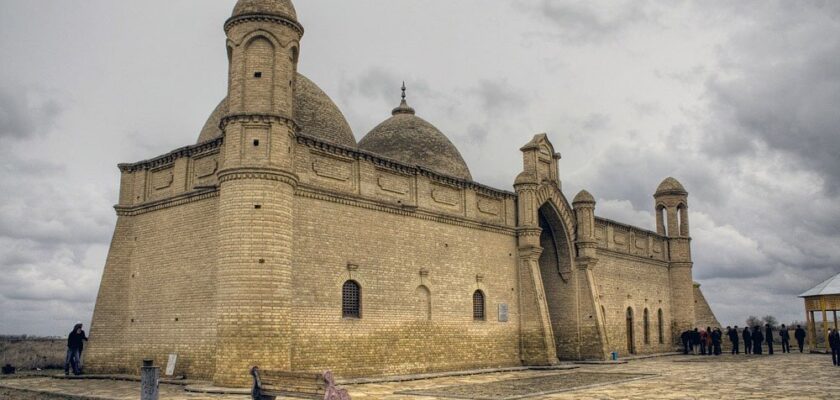Arystan Bab Mausoleum
Arystan Bab Mausoleum is one of the revered Muslim shrines, which is located 150 km from the city of Shymkent, in southern Kazakhstan. A beautiful funerary complex – a mazar – is built over the tomb of the medieval preacher Arystan-Baba. It is a popular place of pilgrimage. To honor the memory of the Muslim saint, many believers from different parts of Central Asia come here.
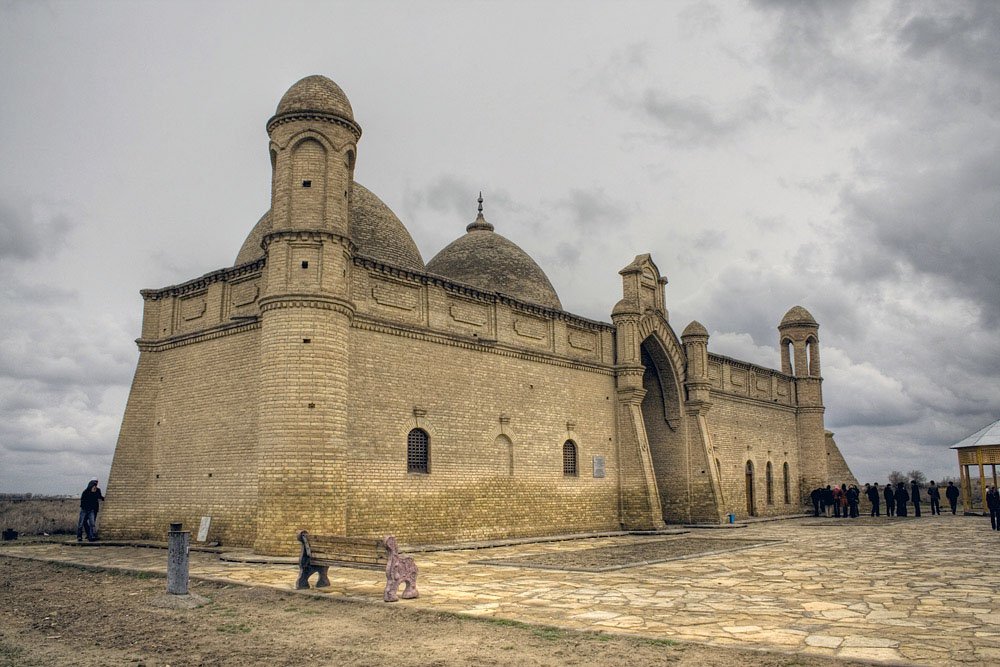
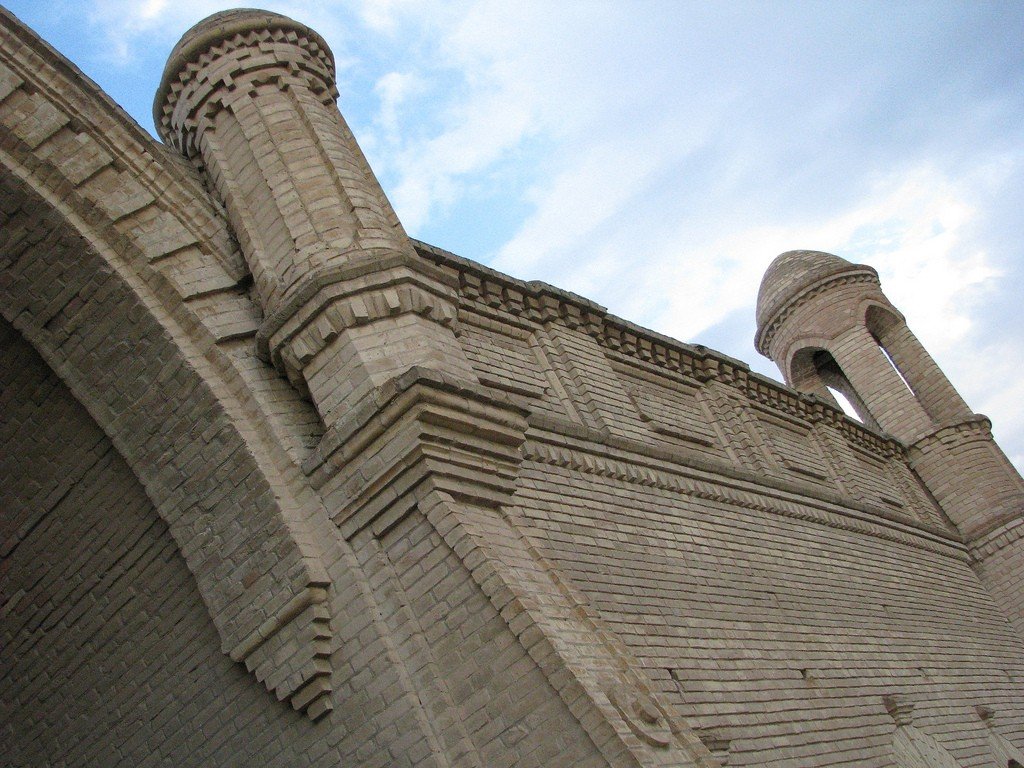
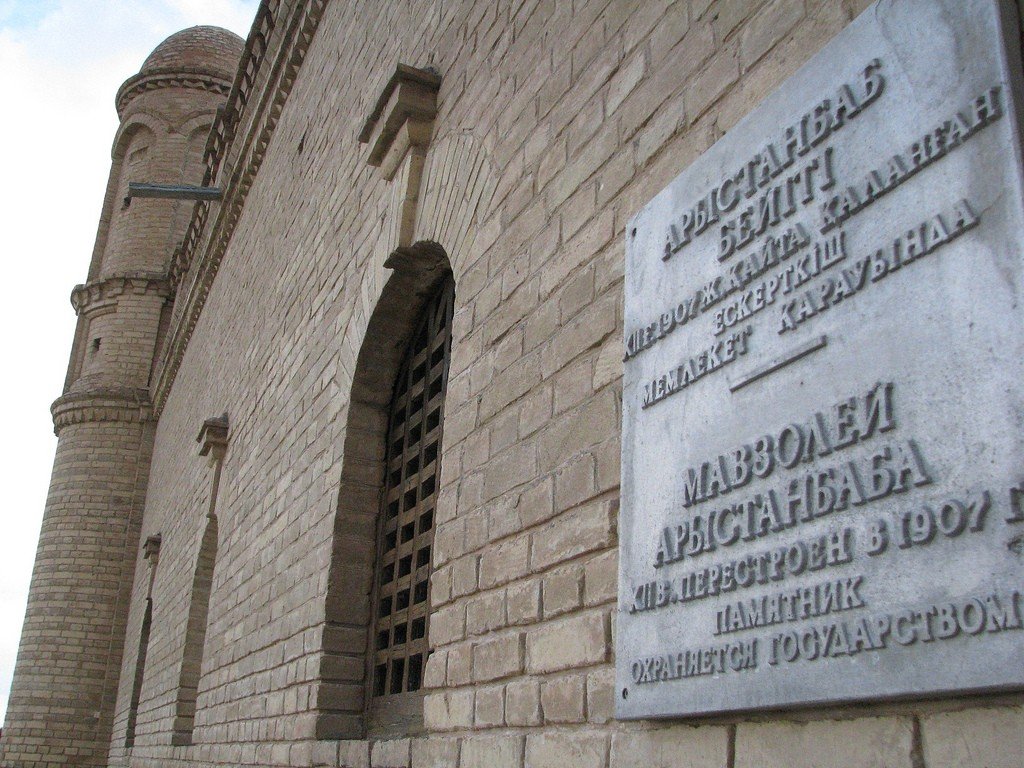
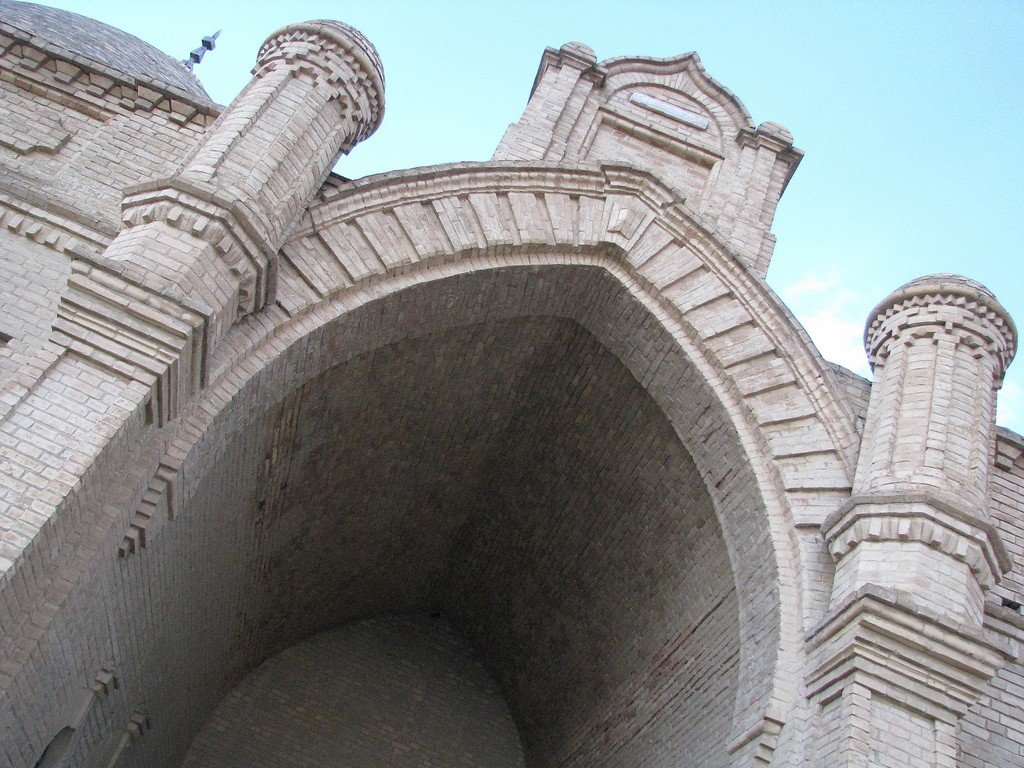
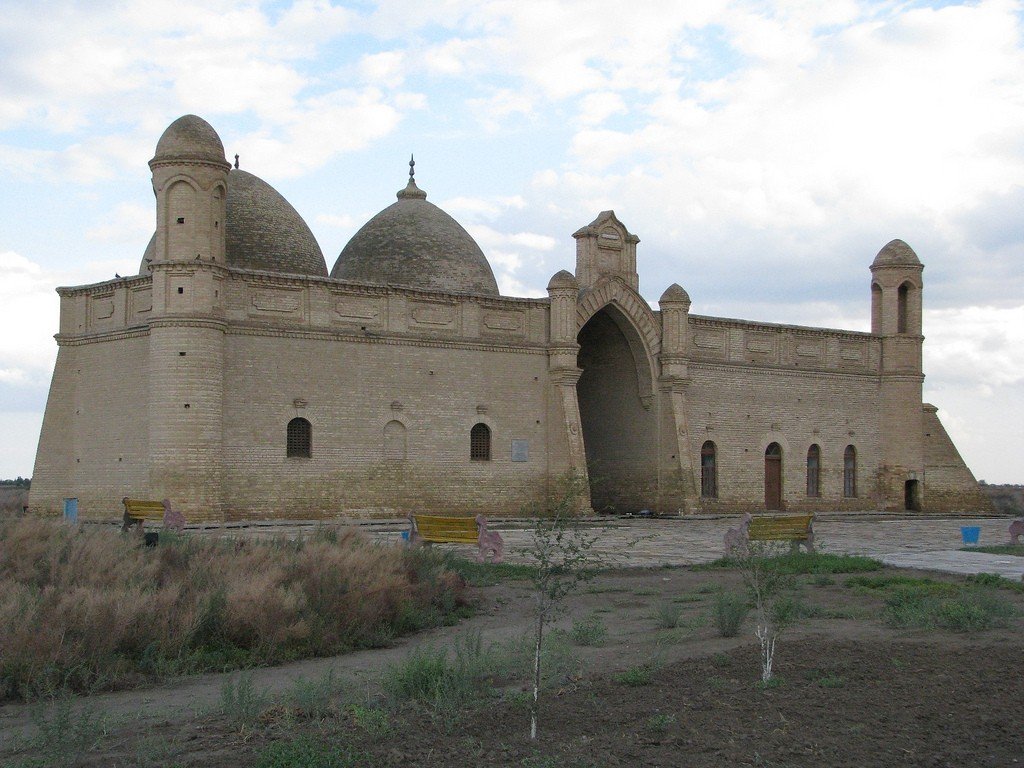
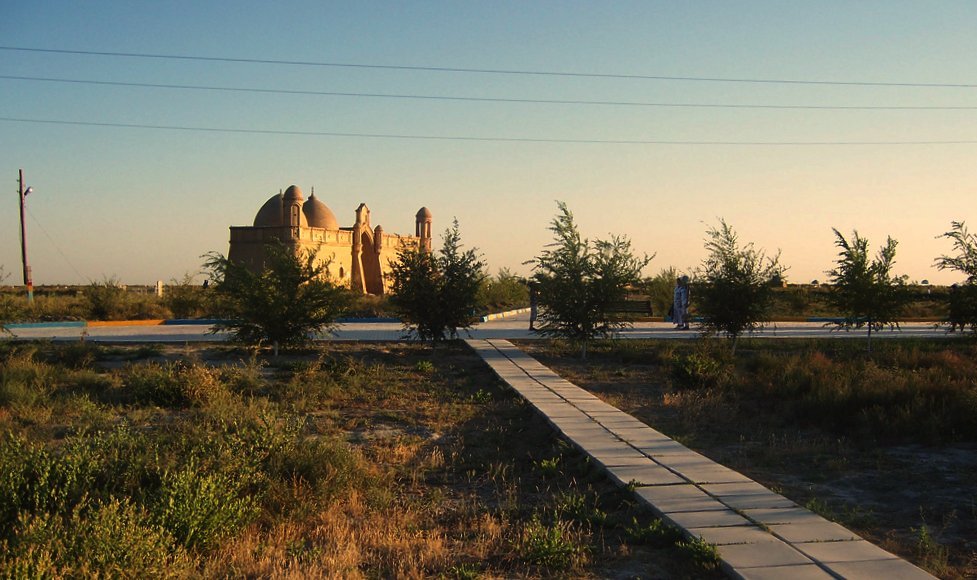
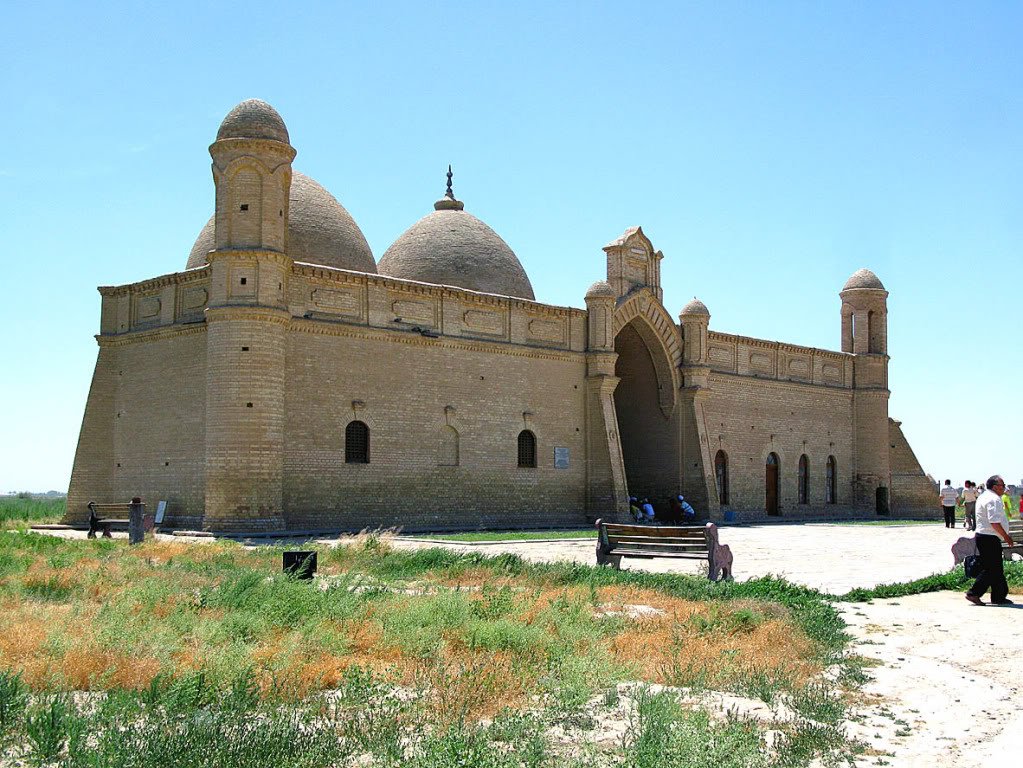
Video: Arystan-Baba Mausoleum
” title=”YouTube video player” frameborder=”0″ allow=”accelerometer; autoplay; clipboard-write; encrypted-media; gyroscope; picture-in-picture; web-share” allowfullscreen>%https://www.youtube.com/embed/pjwtR9bvvVvg” title=”YouTube video player” frameborder=”0″ allow=”accelerometer; autoplay; clipboard-write; encrypted-media; gyroscope; picture-in-picture; web-share” allowfullscreen>General Information
The architectural complex is built of burnt bricks bonded with alabaster mortar. It has dimensions of 35 by 12 meters and a height of 12 meters. The mausoleum of Arystan-Baba includes a two-chamber tomb – gurkhana and a mosque, which are united by a wide vaulted corridor. The mosque consists of a prayer hall with mihrab and auxiliary rooms.
.The Gurkhana is covered by two raised spherical domes. In one part of the mazar there is a large tombstone of the Sufi mystic Arystan-Bab, and in the other part there are graves where his disciples and followers are buried. Hermet-Azyr, Karga-Bab, and Lashin-Bab rest here.
The most picturesque part of the mazar is considered to be the main portal-peshtak, decorated with figurative brickwork. This part of the building has two minarets, but does not look like the usual for Central Asia facades of Muslim temples. The thing is that when making the portal, the architects used decorative elements traditional for Russian and Western European architecture of the XIX century.
.
Inside the building you can see fragments of old mazars. From the burial complex of the XIV-XV centuries preserved made of wood columns vaulted hall or aivan. Another attraction of the Arystan-Baba mausoleum is a beautiful monument of medieval calligraphy – an ancient handwritten Koran.
.History of Arystan-Baba Mausoleum
Arystan-Bab lived in the 12th century in the city of Otrar, which was one of the largest polities in Central Asia before the Mongol invasion. According to Muslim tradition, he is considered a legendary figure and one of Mohammed’s ascetics. Arystan-Bab was a wealthy man, a gardener and taught the prophet the art of gardening.
.
He was the spiritual mentor of the medieval Sufi Khoja Ahmed Yasawi. When Arystan-Bab was gone, he was buried in the vicinity of the town where he lived. A mazar was erected on his grave, but what this first mausoleum looked like remains unknown..
In the XIV century, a new mazar was erected at the place of burial at the will of the powerful and formidable Tamerlane. However, this structure has not survived either. For several centuries, the burial building was rebuilt more than once, as it was destroyed by time and earthquakes. In 1971, the building was demolished due to rising groundwater and was rebuilt with money raised by the residents.
.
Since 1982, the burial site has been protected by the state. Two kilometers away from it is the ancient settlement of Otrar. Here you can see stone foundations and the remnant of the city moat. This is all that has survived from the once prosperous Asian polis. Traditionally, after visiting the mausoleum of Arystan Baba, pilgrims go to the Kazakh city of Turkestan to honor the memory of his disciple – the famous Sufi Khoja Ahmed Yasawi.
.How to get there
The Arystan-Baba Mausoleum is located near the village of Shaulder, in the South Kazakhstan region. First, you need to get to Shymkent by airplane or railroad. From this city to the architectural complex there are shuttle buses and cabs.
.Those who travel by car, from Shymkent should go northwest on the highway E-38, and after Tortkol turn to the southwest – on the road R-58. It takes about an hour to reach the Arystan-Baba mausoleum through Shilik, Timur, Shaulder and Bayaldyr.
.